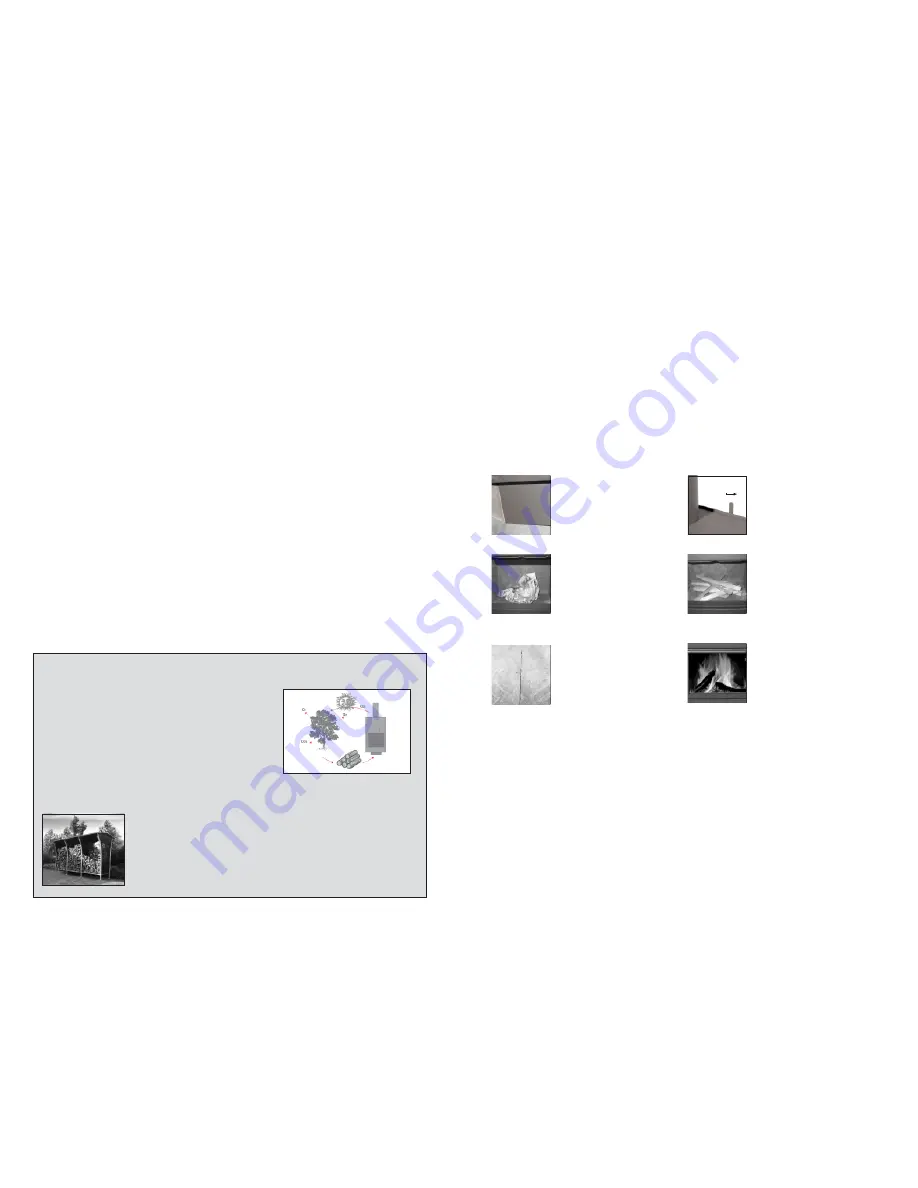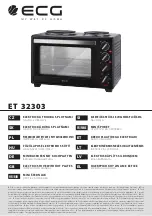
The three basic rules for proper burning are:
1. Use dry and clean wood.
The stove is suitable for burning so-called 'stackable fuels': wood and briquettes. We assume you will be using dry fuels only. So, this also holds
for the kindling paper and cardboard. Wet fuel costs more energy, leaves moisture on the glass and soils the flue.
2. Do not temper the burning process excessively.
Allow the stove sufficient time to warm up (stay with it at this stage) and do not temper the fire too quickly. Bear this rule in mind: you must
not temper a stove until it has warmed up properly.
3. Always make sure there is enough fresh air.
In houses today, cracks and chinks have often been sealed. Opening a small grate or cantilever window will ensure
sufficient fresh air, provided no fresh-air-supply system is used.
•
The main thing when making the fire is that both the flue and the stove reach the proper temperature.
•
Each time you want to open the stove when burning, the air-control slide must be open (completely pulled out) to ensure proper air supply.
What you should know about the HL2 and HL4
•
The HL2 is a single-walled radiant stove with a convection back wall, and the HL4 is a double-walled stove.
This means that when used properly this stove starts a convection current (hot air stream) which ensures a fine heat distribution in the room.
•
The casing is made of sheet steel. The combustion chamber is lined on the inside with high-grade refractory ceramic elements. The elements
of the bottom and the back are affected most (due to the impact of logs when filling) and have therefore been additionally strengthened.
You have purchased a wood stove. In many respects, wood used as fuel is an ideal choice.
But what exactly is wood? Under the influence of sunlight, a tree builds up wood cells from
CO
2
(carbon dioxide), water and minerals. So, in fact, wood is stored solar energy. In its
growth process, the tree takes CO
2
from the air and gives off oxygen in return. Also in terms
of the environment, wood is an ideal fuel. When it is left to rot, the same amount of CO
2
is
released as when it is burned. In environmental terms, we then say that wood is 'CO
2
-neutral'.
Only dry wood is stove wood
Not all wood qualifies as stove wood. Good burning is obtained by using wood that has been
seasoned for at least eighteen months. That is to say: preferably chopped wood that, stored
under a shelter and protected from the rain, can slowly let its moisture evaporate. Dry wood
does not sizzle in the fire and does not soot the glass.
Erik Bendien created the wood store that allows wind access from every side. This is logical - wind dries
wood. Hence the basic grid, which is free of the ground to avoid damp, the perforated side-panels and the
extra space above. The uprights and the grid are in stainless - galvanized - steel. After a while the corten-steel
side panels start to oxidise. It's designed that way because the thin layer of rust is both highly decorative,
and protects the panels against further corrosion. The basic module, with a single compartment, can handle
1.3 cubic meters of wood. This can be widened by the same dimensions. It looks good as a garden partition
or alongside the drive. With the user-friendly instruction you can put together The WoodStocker in no time at
all. The highly robust finished item can be manoeuvred when empty. And disassembling The WoodStocker is
just as easy, when you move house.
The fine heat from wood
The Woodstocker. Getting firewood good and dry.
HL2 and HL4
We congratulate you on the purchase of your stove. This manual will inform you about the best way of using the stove and the art of
keeping a perfect fire. Before using the stove, carefully read the text about breaking in the stove.
These heating instructions apply to the HL2 and HL4 type. They are merely intended as a guideline as your stove will behave differently
according to the place where it is installed, simply because the conditions are different. The flue, the weather, the quality of the wood
used and the climate conditions in the house determine your stove’s burning behaviour. In time you will develop your own directions for
use, based on these heating instructions.
Initial fire-up, a good start
You have purchased a brand-new stove; ‘zero on the meter’, has not seen a flame yet. This means that you are going to take care of the first
few ‘miles’. This initial operation requires some additional time and attention as well as the steps we have outlined for you below.
This procedure will take 3 to 4 hours. Before you start, bear in mind the following point.
O The refractory ceramic elements will evaporate moisture and your stove will start setting. Therefore, the first few times, do not build
your fire too hot because otherwise the elements could crack. However, you need not worry about any shrinkage cracks being formed.
Initial fire-up in steps
1. First check to ensure that the heat
shield (the inclined steel shield above
the combustion chamber) hangs
properly at its fastening point.
2. Fully open the air-control slide by
pushing it all the way to the right. Put
the throttle flap in its opened position
(the position of the handle corresponds
to the position of the throttle flap).
3. Light a large ball of dry paper against
the back wall of the combustion
chamber and let this fire go out again.
5. Allow the fire to go out and the stove to
cool off so that the moisture in the
refractory ceramic elements can
evaporate.
6. Then you will start bringing the whole
stove at the proper temperature using
first some thin kindling wood and then
small, thicker logs + 5 x 5 cm thick and
30 cm long. Leave the window ajar.
Shut the window once the small logs
catch fire. The stove will now heat up.
Again: ventilate properly, ensure a good
draught to the outside, drawing back
the curtains all the way and opening
doors and windows of the room.
4. Fill the stove with a handful of dry and
thin kindling wood. Light the wood and
leave the window ajar.
8
9







































